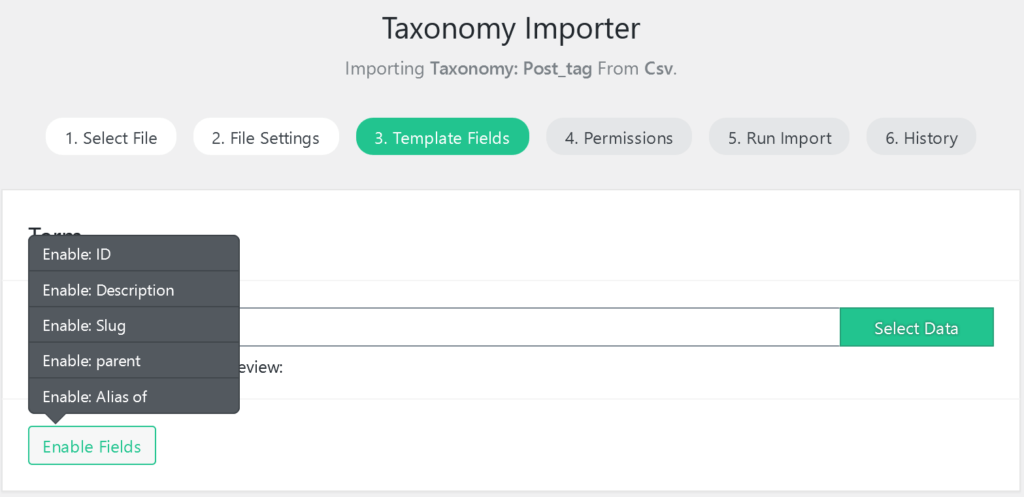WordPress Taxonomy Importer Template
When creating the importer you first have to select the taxonomy that you are wanting to import terms into, once the importer has been created will you then be able to populate the fields for each taxonomy term via the Visual Data Selector.
Since the introduction of WordPress 4.4 we now support importing to taxonomy custom fields using the term meta table.
Taxonomy Fields

Taxonomy template fields can be enabled / disabled via the settings tab, by default only the core taxonomy fields are displayed which are explained below.

| Options | Description |
|---|---|
| ID | The ID field is only used as a reference to existing fields |
| Name | Set the name of the taxonomy term. |
| Description | Set the taxonomy term description. |
| Parent | The term slug to use. |
| Alias of | Select the page parent from the dropdown field, or enable the text field to use the data selector tool to choose element from import file |
Parent settings

Select the page parent from the dropdown field, or enable the text field to use the data selector tool to choose element from import file, depending on your chosen file element you can change the reference type via the sub field Parent Field Type of either (ID, Slug, Name or Reference Column).
Selecting the reference column allows you to identify the parent record based on the Parent field value matching the Value set in the reference column.

Taxonomy Custom Fields
Custom fields allow you to import extra taxonomy term data which your theme or plugins may use, this could be term thumbnails, extra informational.
Custom field keys are manually entered, or can be populated via a predefined list of popular values, this list list can be extended via a WordPress filter to make it easier when creating imports.